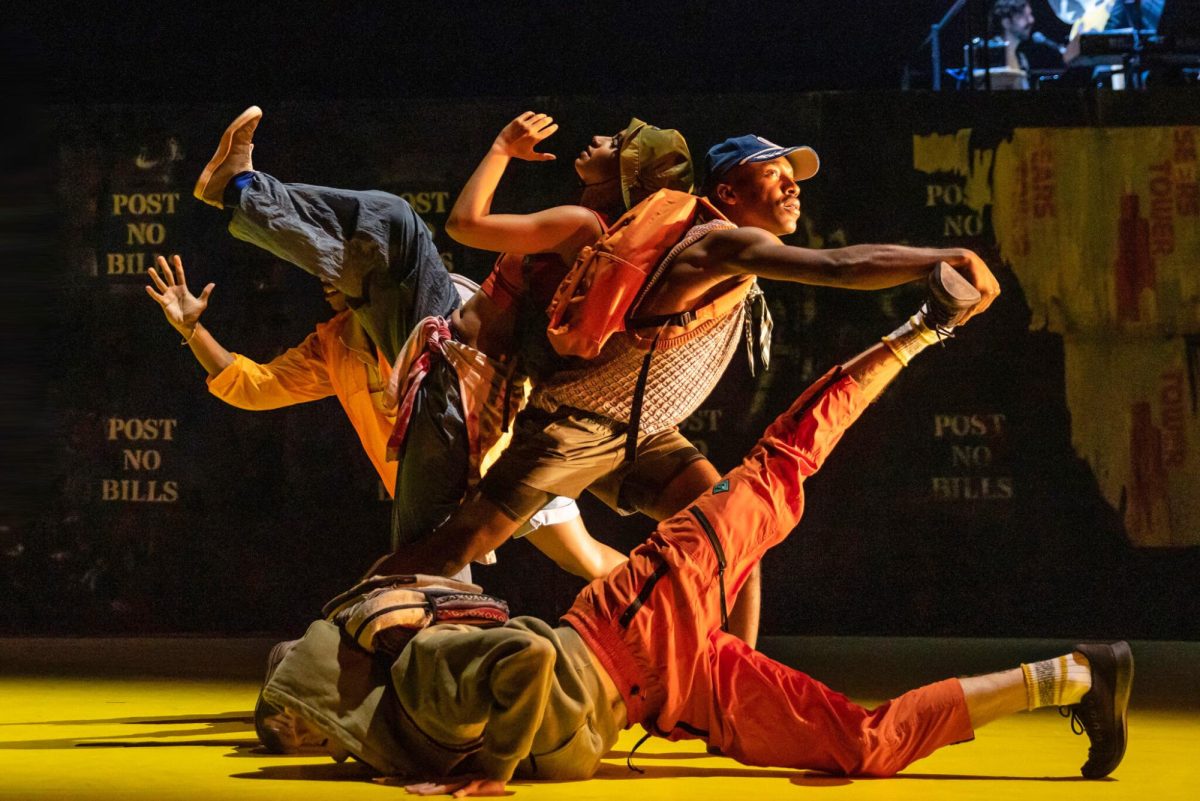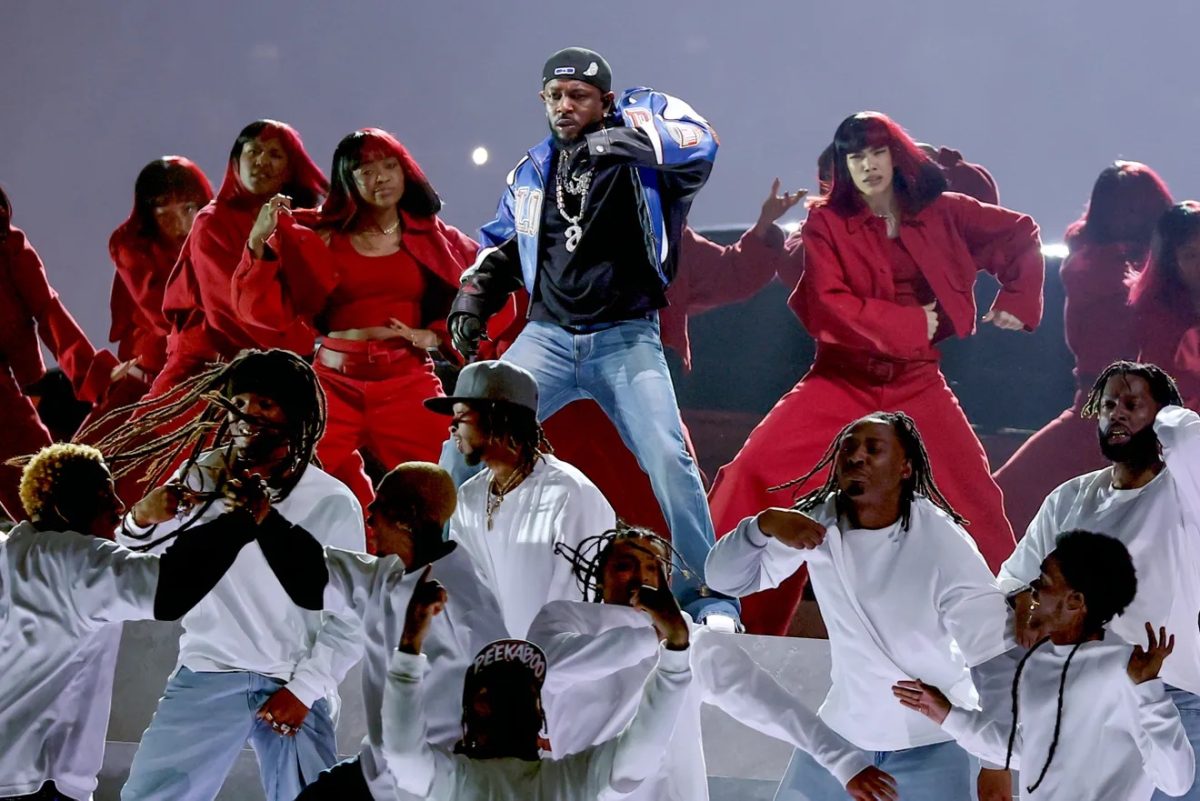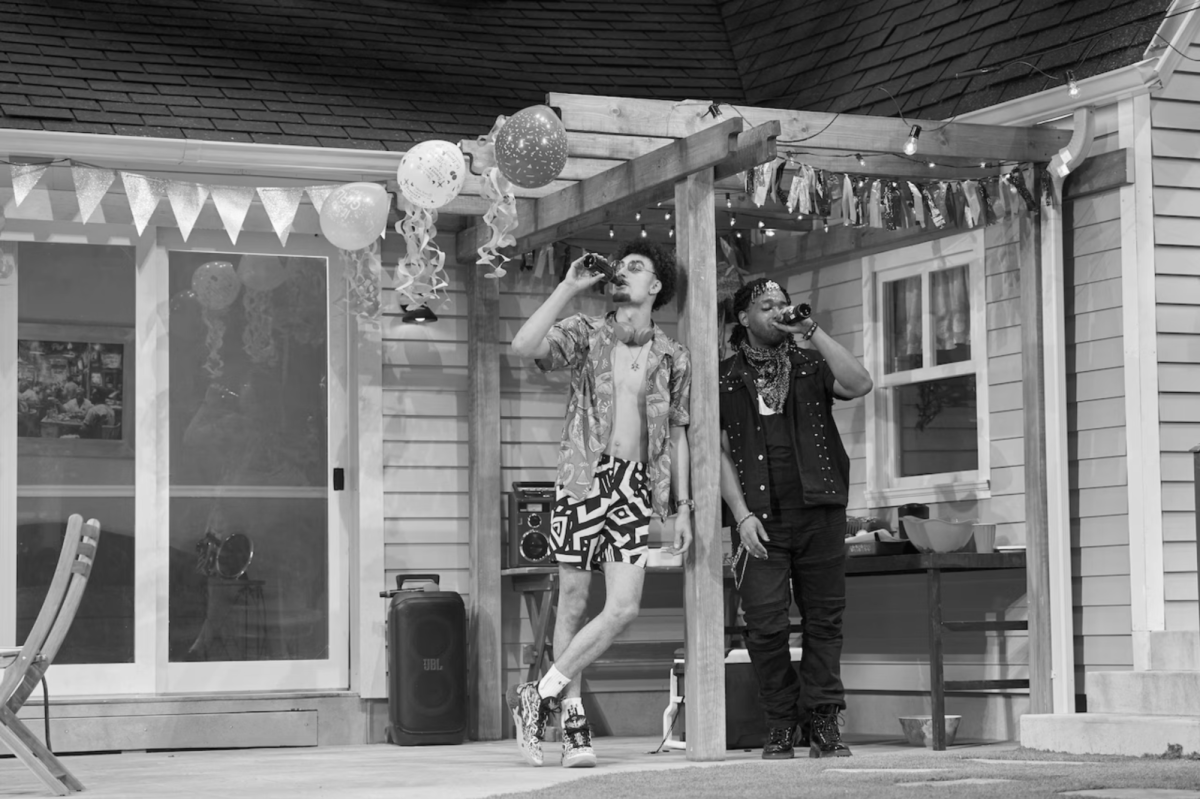Editor’s Note: This piece contains mentions of suicide.
When I heard Illinois by Sufjan Stevens was being turned into a musical, I was skeptical. As a lover of musical theater, I have grown fatigued by the jukebox musicals that have dominated the scene in recent years. As a devoted fan of Sufjan Stevens, I was worried that a staged production would not be able to capture the unique feeling of the Illinois album. I was hopeful, seeing as the show was directed and choreographed by Justin Peck, who recently worked on Stephen Spielberg’s West Side Story and the 2018 revival of Carousel. However, I was still filled with doubts. So, naturally, I made the pilgrimage to the Chicago Shakespeare Theater for the world premiere of Illinoise: A New Kind of Musical to see what had come from one of my all-time favorite albums.
Immediately, the set eliminated many of my fears about stylistic changes. Made hazy by copious fog machine usage, the stage consisted of a wide-open floor with three upside down pine trees suspended above. This alone captured the eccentric energy of the album. There was also a large billboard that projected different titles throughout the show, and the backdrop was filled with different styles of graffiti. The band played on stage, suspended high on a large platform. Three soloists were featured up front, dressed in moth costumes with vibrant wings, and their voices definitely did justice to the soft folk melodies that Stevens provides.
Now, having seen the show in all of its glory, I can definitively say that Illinoise was unlike any theater experience I have ever had. I can merely try my best to describe the show in all its abstract beauty.
The production functioned like a contemporary ballet: the band played through Stevens’ album while the actors expertly performed intricate dances that told the story of Henry, a “memoirist in denial who eventually shares a tragic and true story about first loves,” as quoted from the playbill. Any concern I had about narrative confusion was swiftly disbanded. The majority of the story is told via the set the characters inhabit. Throughout the show, subtle lighting shifts would illuminate graffiti to indicate where the story was unfolding: the “small town middle of nowhere,” Chicago, New York City, or the Sears Tower.
The minimalist set was brought to life by the incredible players of the show. When the story opens, we are introduced to our main player, Henry. In a small square of light, he leaves his boyfriend in the middle of the night and sets off on… a camping trip? It is unclear what brought Henry to this campsite with his friends, but nonetheless the entire ensemble eagerly prepares a bonfire (a collection of camp lanterns stacked on top of each other) to the tune of “Come On! Feel the Illinoise!” The exuberant group moves jaggedly with excitement, perching themselves on picnic blankets and folding chairs, getting ready for campfire stories to be told.
Our first four storytellers recount various fictional stories, consisting of “John Wayne Gacy, Jr.,” “Jacksonville,” “They Are Night Zombies!! They Are Neighbors!! They Have Come Back from the Dead!! Ahhhh!,” and “The Man of Metropolis Steals Our Hearts.” The two pieces that stood out the most from this bunch were “…Night Zombies…” and “…Man of Metropolis…,” which contrasted each other beautifully being performed back to back.
In “…Night Zombies…,” one of the characters, Jo, comes face-to-face with undead historical figures like Christopher Columbus and Ronald Reagan, gracefully battling them off as they adamantly attack her. The carved zombie masks are a highlight of this number, giving every ensemble member a haunting appearance on a dimly lit stage. Conversely, “…Man of Metropolis…” was brightly lit and energetic. Clark and the entire ensemble ripped off their clothes to reveal shirts with the famous Superman “S,” filling the theater with much needed laughter.
Eventually, the other narrators convince Henry to tell his story. During “Decatur, or, Round of Applause for Your Stepmother!” Henry introduces his two childhood best friends Carl and Shelby and recounts his youth with them. In “Chicago,” the trio takes a roadtrip to the city, where Carl — who Henry is secretly in love with — quickly falls in love with Shelby. This scene features very inventive usage of flashlights as the ensemble forms a makeshift car, contorting their bodies around the friends as they travel from place to place. The trio eventually end up in New York City, where they live until Shelby is diagnosed with bone cancer.
“Casimir Pulaski Day” was one of the standout moments of the show. Carl follows Shelby back to their hometown, leaving Henry in New York. The couple performs a heartbreaking duet that deteriorates as her condition worsens. The choreography in this number was some of the best in the show, effectively communicating the devastation that overtakes the young couple as Shelby eventually succumbs to her condition. Peck’s ability to transform movement into language is truly remarkable, and many audience members — myself included — could be heard crying for the remainder of the show.
In New York, Henry often tries to reach out to his first love Carl. Unanswered payphone calls lead to miscommunication between the friends, and in “The Seer’s Tower,” a tormented Carl fights suicidal thoughts. Players dressed in black beckon him to join as they throw themselves off the eponymous tower, and after a tragic contemporary dance sequence, Carl joins them and leaps into darkness.
Henry, after learning of his friend’s death, reflects on their time together in “The Predatory Wasp of the Palisades Is Out To Get Us!” The scene ends, and we are transported back to the campfire where the story began. Everyone gets up to console the heartbroken Henry when his boyfriend, Douglas, appears and joins the group. Everyone then celebrates the beauty of life in “Chicago (reprise)” and “The Tallest Man, the Broadest Shoulders.”
Overall, Illinoise perfectly captures the world that Sufjan Stevens builds in his album. Justin Peck lends his talents expertly to tell a story of yearning, loss, and acceptance. It is incredible that through music and dance alone the team behind Illinoise was able to convey such an emotive message on the absurd reality of youthfulness and growing up. I left the theater with tear stains on my face to find that everyone, from gray hair to pink, had similar markings. The true beauty of theater is its universal ability to create raw, emotional experiences, and this show did just that. Illinoise truly is a new kind of musical, and I couldn’t recommend it enough.




















